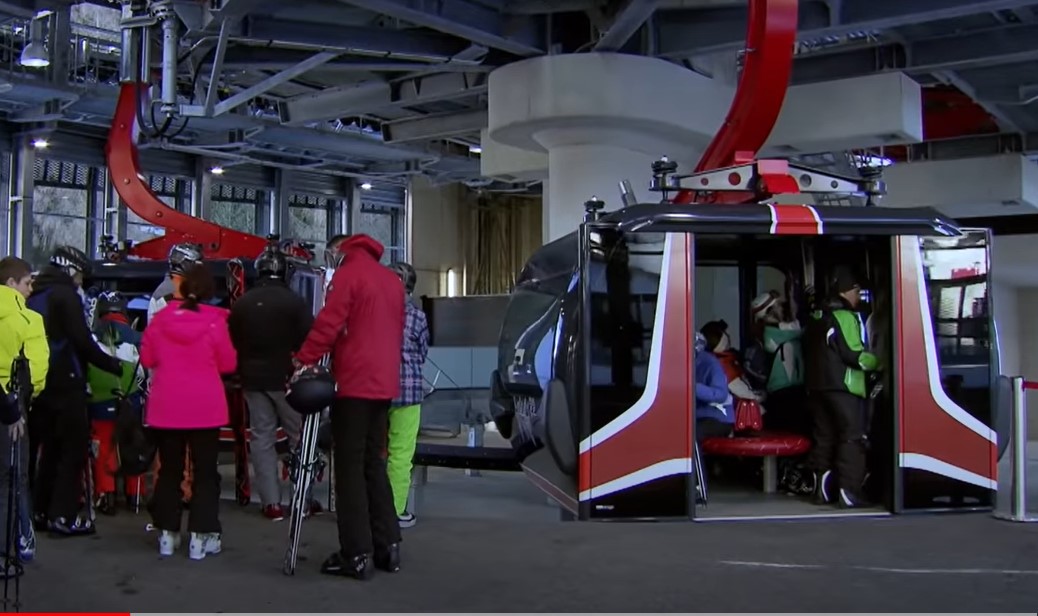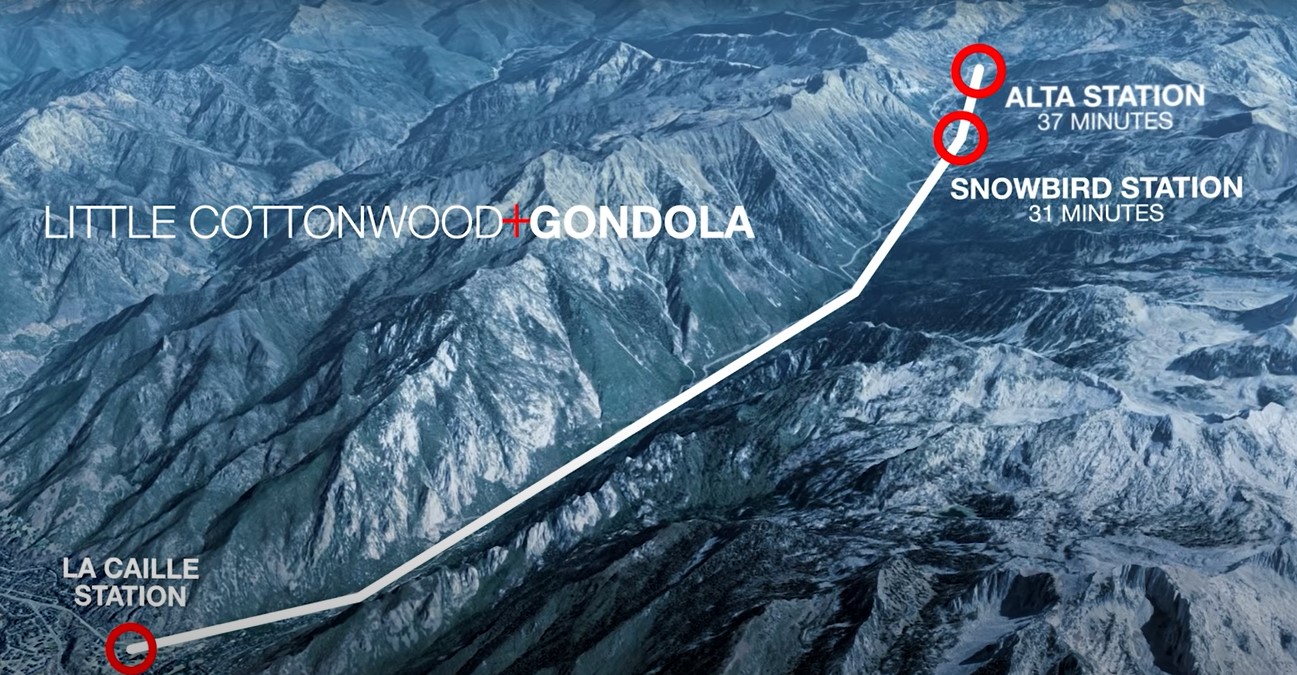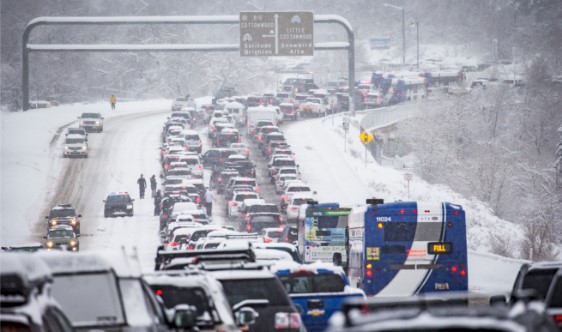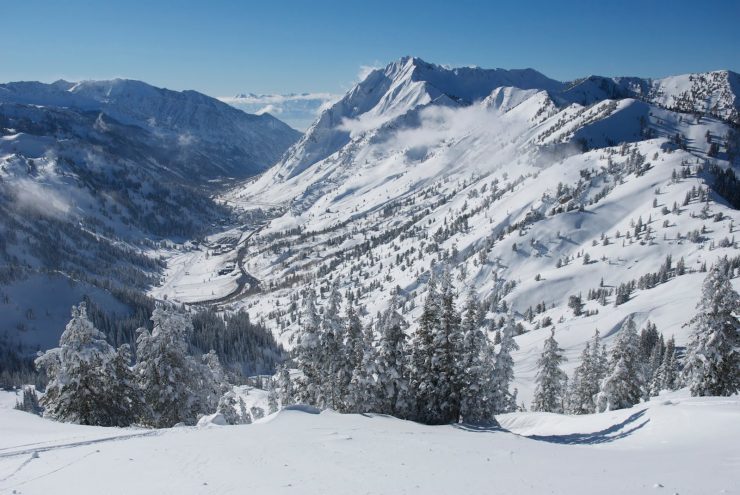
Earlier this summer when the Utah Department of Transportation (UTDOT) officially recommended a gondola to fix the traffic in Little Cottonwood Canyon they left out one vital piece of information: what it would cost to ride the gondola.
The answer to this question is up for speculation and involves a lot of moving parts. However, applying some known facts and economic concepts can help get an estimate.
What we know
Along with the gondola, UDOT has proposed to install tolls on cars in Little Cottonwood Canyon. These are estimated to be $25-$30 per car. This is the first clue as to what it could cost to ride the gondola.
Another important piece of information is the cost of the project. The estimated cost of the gondola is $550 million plus another $7 million a year in operating and maintenance costs. It is important to note that these estimates were made before the significant price increases that have happened in the past year.

Additionally, a treasurer for the town of Alta has been using UDOT’s figures to calculate the cost per rider. Based on expected ridership, the expected cost per rider will be about $90 on the low end. However, if ridership is lower and the construction and operating costs are higher than expected, then it could cost up to $200 per rider. This would be what it would cost to essentially break even or have fares cover all the costs.
Public transit is highly subsidized
The reality is nearly all public transit costs more to operate than is collected in fares. In 2019, the Utah Transit Authority (UTA) collected 16% of its costs from fares. The rest is paid by taxpayers.
Applying that same math, assuming the actual cost per rider is on the lower end of projections at $100, then the fare might be around $16. This would intuitively make sense and would fall in line with the cost of the car tolls of $25-$30 because two or more people could share that cost.

Another factor that could drive consumer behavior is road conditions. All else being equal, if the roads are good with little traffic, then taking your car is faster. If the roads are bad or closed due to avalanche danger, it would push more people to the gondola. This could bring up the topic of dynamically pricing the cost to ride the gondola, where the cost would increase on busy weekends and powder days.
Bottom line
The price to ride the gondola will have to be attractive enough to lure users to it when considering all other options. This includes driving themselves or taking a bus. Based on what we know already, my best guess is that the cost to ride the gondola will be around $15-$20 per person. This of course could change considerably as new information becomes available.
Whatever the price ends up being, it is sure to be just as controversial as the gondola itself. Nobody likes to pay more than they have to and Utah skiers have mostly enjoyed getting to the mountains with just the cost of gas. Now it looks like no matter what method of transportation they choose there will be an additional cost.

good observation, it is on powder days. not every day. It isn’t like an interstate bridge or a connection to an island. It is a problem for people who willing take on high demand travel up a dead end canyon. Maybe season and day passes should just be doubled instead of fares to ride the gondola, expensive parking or canyon user fees.
Glad I rode the Cottonwoods back in the 90’s! Fine with tax payers paying for this as long as it comes out of the SL county taxes. Why should the rest of us have to pay for this. I BC ski in the southern Wasatch and have zero traffic and rarely even see another group, don’t contribute to the problem so shouldn’t be forced to be part of the solution.
Well said! I would like to think that many share this reasonable viewpoint, and it’s just that unreasonable people are more likely to post. This is also something Europe has already figured out, they realize that wise mountain infrastructure investment can be a win for people and the environment.
Regardless of what people think, traffic is a problem year round, it’s just worse during the ski season. The main issue is the road, there are too many people that use the canyon now. UDOT is simply trying to solve a traffic problem. Everyone is making this political when they should be thinking of it as an engineering problem. Yes the resorts are the primary benefactors, but think about it. When you go out it’s usually to a place of business or work, then back home. When UDOT works on a rod somewhere its usually due to congestion so traffic can flow better. It’s no different here, you don’t make all the businesses pay for the road when you expand it. It’s considered infrastructure and funded as such.
Personally I remember when Provo Canyon was just like LCC, a beautiful canyon with a 2 lane road. When you expand a road like they did in Provo Canyon you do irreversible damage to the mountainside. Gondola towers have a smaller footprint than people think. They can also be removed and the environment restored when a better fix is funded, like a tunnel. Yes gondola towers are ugly and it would have a big visual impact. But guess what, a wind turbine has a big visual impact, but its better than a coal/gas burning power plant, or hundreds of cars sitting in idle.
I’ve been stuck in the red snake many times year round. More buses are not a fix, they are prone to all the issues UDOT is trying to address. People need to realize this, more bus is not a fix, or even a band aid. People don’t like riding them unless forced to.
Ultimately I think an underground tunnel with a road or rail will be the endgame in 10-20 years. I read the cost and existing mining claims are roadblocks that will need to be solved.
Passion almost always overrules reason, people need to think this out before going red in the face screaming no gondola. UDOT had offered 2 options, not 3 or 4, just 2. You cant reject reality and substitute your own just because you are mad. When you approach this from an engineering view, taking all factors into account, anything that uses the current road is not the best option.
The traffic isn’t the most important thing. Pollution and safety are. I just wish season pass holders had a weekday and single weekend day blackout every week before doing this. That would put an enormous dent in the amount of people going up the canyon
Exactly right. Initially the idea seemed kind of cool but the reality is $1B dollars up front, and taxpayer funded; massive operating costs; destroying several renowned climbing/bouldering areas; eyesore towers, cables and gondolas running through one of the most beautiful canyons in Utah… All to benefit 2 ski resorts on a very minimal number of days per year??? How does this make good sense?
Everything… It will cost “Everything”
Wow that seems like an expensive solution when the “problem” is 20 days of bad traffic a year.